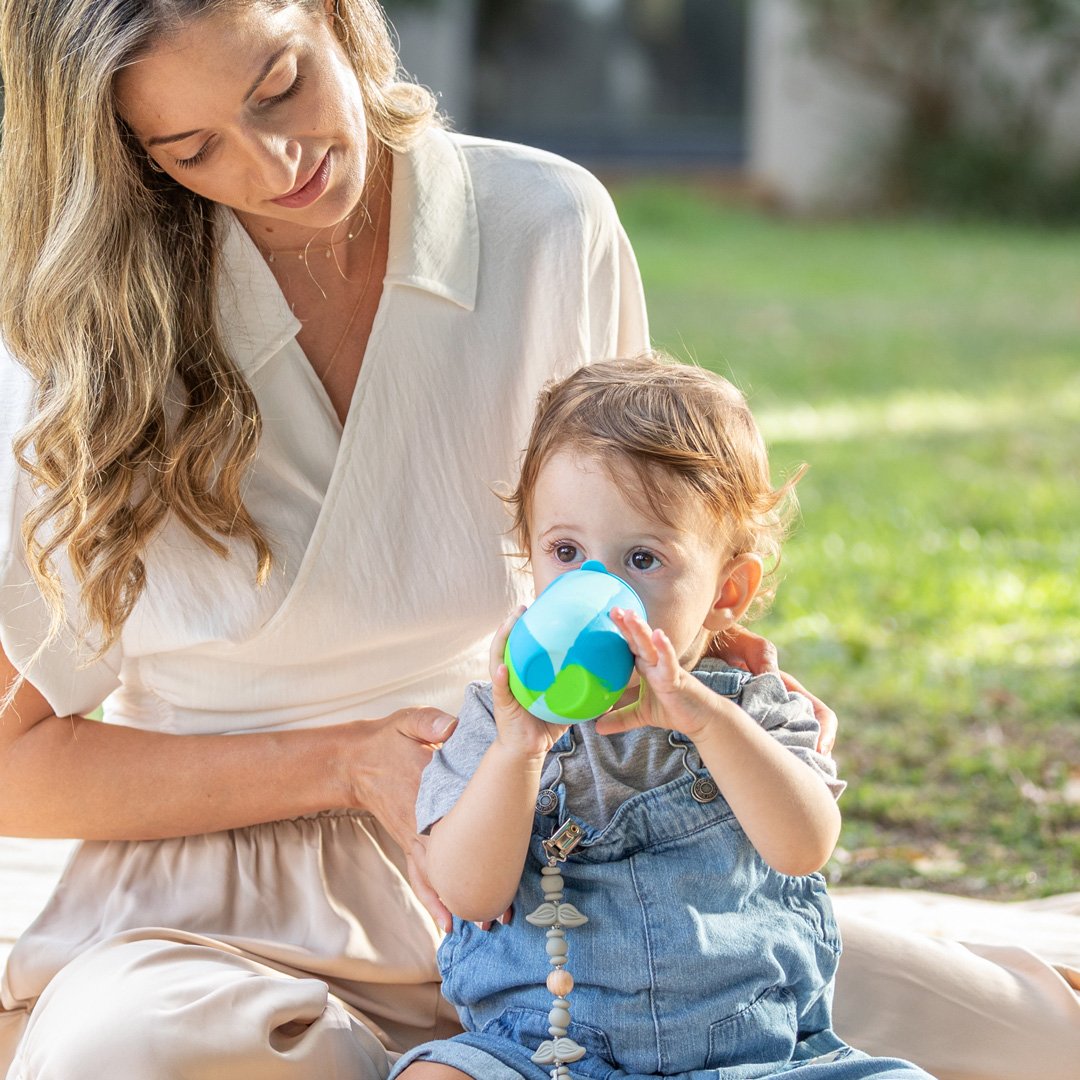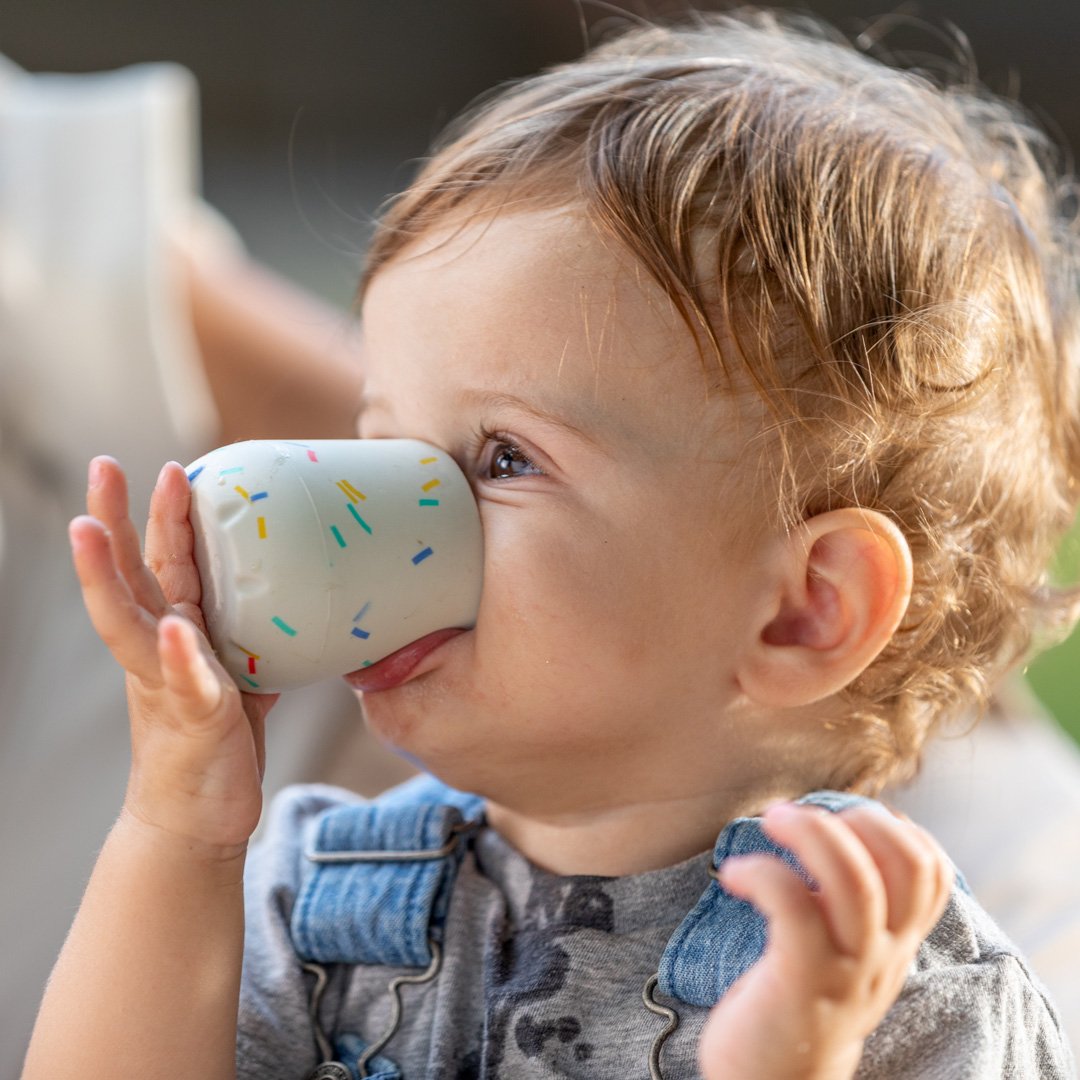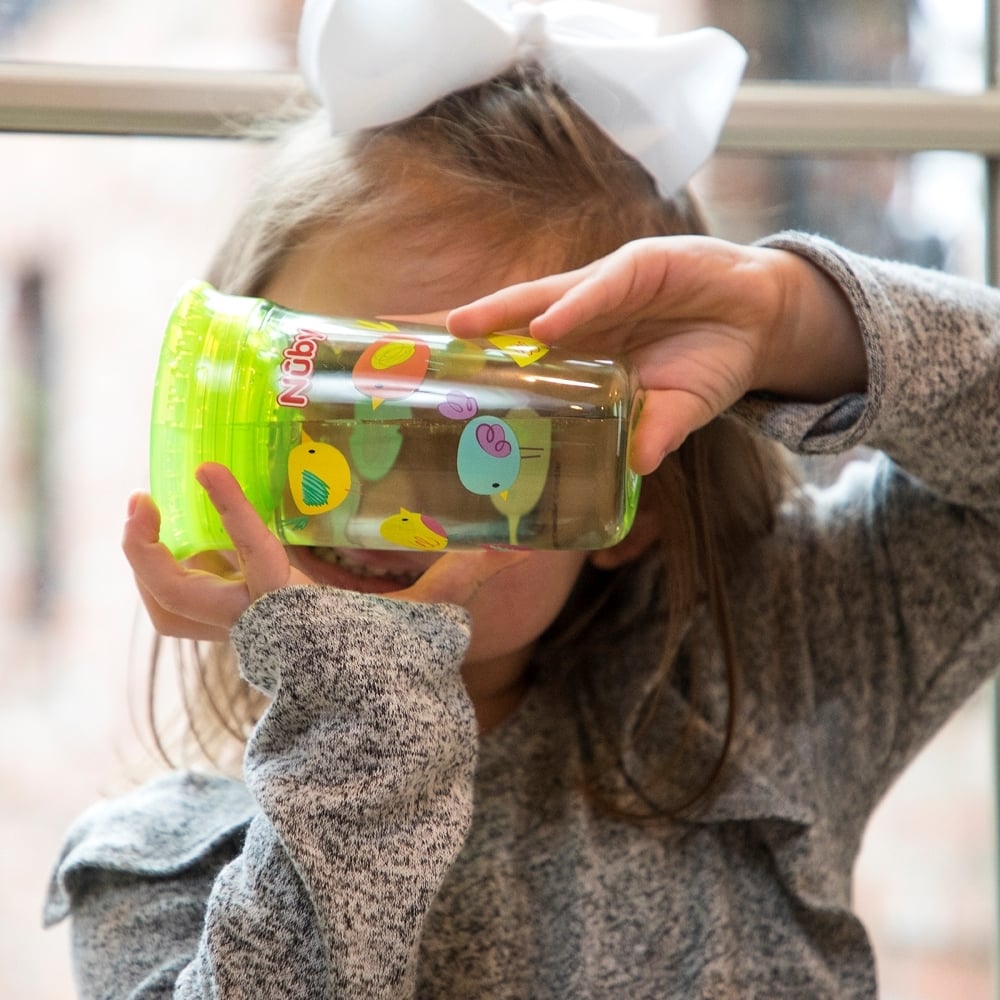You've made the big move from bottle to sippy cup, and now you think the time has come to upgrade to an open cup. We understand that it may seem like a scary process - especially as you prepare to mop milk from your floors every day. But it's an important milestone for your child to learn, and the sooner they start using an open cup, the better.
Here, we'll run through when you should start introducing open cups and when your child should stop drinking from sippy cups altogether. We'll also share some tips on how to help your child drink from an open cup and the best sippy cup alternatives.
What Age Should a Child Stop Drinking from a Sippy Cup?
There's no denying that sippy cups are extremely convenient. Whether you and your child are out and about at the park or in a shopping mall, or you're visiting a friend and don't want to make a mess in their home, sippy cups are the best solution. But, they are designed to be used as a short transition to regular cups.
At two years old, your child will be developmentally ready to say goodbye to the sippy cup, but they likely would've formed an attachment to it and will need plenty of encouragement and patience from you to wean them off. Ideally, they should be completely weaned off the sippy cup by the time they are three years old.

When Should I Introduce Open Cups?
While there's no 'best time' to introduce your child to an open cup, we recommend introducing a few open-cup sessions between 6 and 12 months old.
At six months old, most children are able to take small sips from an open cup with the help of an adult. Of course, there'll no doubt be some dribbling and even a few spills, but getting them used to drinking from an open cup early will help you in the long run.
At twelve months old, most children will be able to hold and use a cup correctly, taking small sips with minimal help from an adult. There will probably be a few more spills at this stage, but building their confidence and letting them learn from their mistakes is vital.
If you introduce your child to drinking from an open cup early, they should be well-practiced by the time they're 18 months old and mostly dribble-free!

The Risks of Using Sippy Cups for a Long Time
Simple and easy to use, sippy cups are a great way of transitioning your growing baby from a bottle to a cup. As we said above, they should only be used as temporary transitional cups and not permanently. The risks of using sippy cups for a prolonged time can lead to:
- Tooth decay and cavities.
- Developing 'comfort feeding' habits, which can result in an unhealthy relationship with food.
- Speech problems.
- Mouth injury if your child falls while using the sippy cup.
- Damage to permanent teeth development.
- A change in their facial appearance.
How to Help your Child Drink from an Open Cup
Progress and teaching your child how to use an open cup is never a straight line. You'll experience both good and bad days. The key is to not give up. If your child is struggling to use an open cup and keeps demanding their sippy cup instead, here are a few tips to help them:
- Make it a special cup - at two years old, your child will begin having their own opinions (a blessing and a curse). Making their open cup special by allowing them to choose it themselves, from a bright color or a fun character design, will give them a sense of control and, hopefully, make them want to use their ‘special cup' more often.
- Show them how it's done - toddlers learn by copying. If they see you or another caregiver drinking from an open cup, chances are they'll want to try it themselves.
- Swap and change cups - transitioning your child from a sippy cup to an open cup will have a better chance of success if done slowly. Swap and change the cups throughout the day and encourage them to like the open cup more. For example, this can be done by making the open cup special or using the open cup for their favorite drinks.
- Don't get angry - as frustrating as it may be to see your child constantly spilling their drinks, getting angry at them won't help matters and may make them feel discouraged or even scared to use their open cup. If you want to prevent mess as much as possible, limit the cup use to the kitchen, which is a much more hardwearing location, or use a floor mat.
Choosing the Right Cup for your Child
With hundreds of cup choices out there for your child, how do you choose the best one? Some cups, like our baby's first open training cup, have a weighted base, making it harder for little hands to knock over. The cup you choose will depend on your child's specific needs and which you think they will enjoy using the most.
Water bottles also make a good alternative to the sippy cup and allow them to drink a few sips whenever they need. And our No-Spill 360 Wonder Cup is easy for toddlers to use in the transition to an open cup, with a soft silicone rim that can be sipped from all sides while also preventing drips and spills.

Remember to stay positive and keep encouraging your child to use the open cup - even when they make a mess. Soon enough, your child will be a cup-drinking pro!
Take a look at our full range of cups for every development stage of your growing child.



